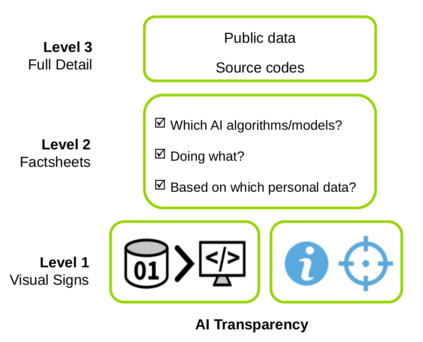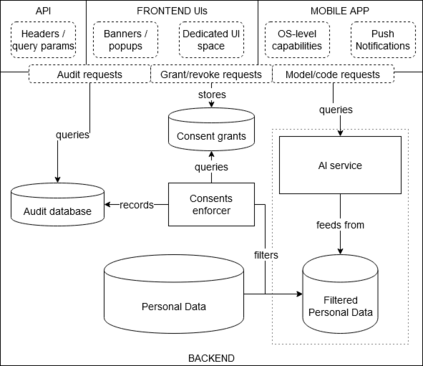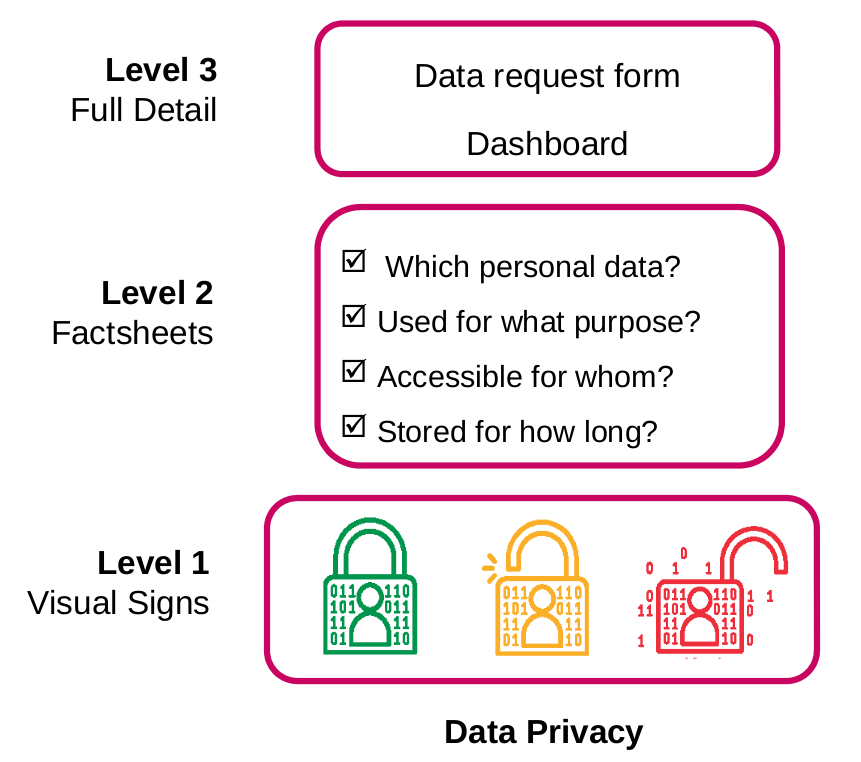Today, Artificial Intelligence (AI) has a direct impact on the daily life of billions of people. Being applied to sectors like finance, health, security and advertisement, AI fuels some of the biggest companies and research institutions in the world. Its impact in the near future seems difficult to predict or bound. In contrast to all this power, society remains mostly ignorant of the capabilities and standard practices of AI today. To address this imbalance, improving current interactions between people and AI systems, we propose a transparency scheme to be implemented on any AI system open to the public. The scheme is based on two pillars: Data Privacy and AI Transparency. The first recognizes the relevance of data for AI, and is supported by GDPR. The second considers aspects of AI transparency currently unregulated: AI capabilities, purpose and source. We design this pillar based on ethical principles. For each of the two pillars, we define a three-level display. The first level is based on visual signs, inspired by traffic signs managing the interaction between people and cars, and designed for quick and universal interpretability. The second level uses factsheets, providing limited details. The last level provides access to all available information. After detailing and exemplifying the proposed transparency scheme, we define a set of principles for creating transparent by design software, to be used during the integration of AI components on user-oriented services.
翻译:今天,人工智能(AI)对数十亿人的日常生活有着直接影响。由于适用于金融、卫生、安全和广告等部门,AI为世界上一些最大的公司和研究机构提供了燃料。在不远的将来,其影响似乎难以预测或约束。与所有这些力量相比,社会仍然大都不了解今天AI的能力和标准做法。为了解决这种不平衡,改善人与AI系统之间的当前互动,我们提议在向公众开放的任何AI系统上实施一个透明度计划。该计划基于两个支柱:数据隐私和AI透明。第一个支柱承认数据与AI的相关性,并得到GDPR的支持。第二个支柱考虑AI透明度目前不受管制的方面:AI的能力、宗旨和来源。我们根据道德原则设计这一支柱。我们对这两个支柱中的每一个支柱都界定了一个三级的展示。第一个层面基于视觉信号,受交通标志的启发,管理人与汽车之间的互动,并设计为快速和普遍的可解释性设计。第二层次使用概况介绍,提供有限的细节。最后一个层面提供所有可用信息,并得到GDPR的支持。第二个层面提供获取所有信息的渠道。第二个层面是目前不受管制的信息:AI能力、目的和源。我们根据道德原则设计设计一个面向用户的软件的系统设计设计,然后详细确定一个软件整合的软件整合。




















